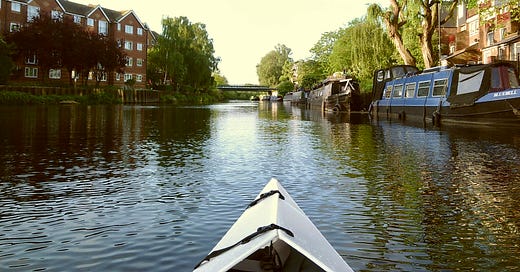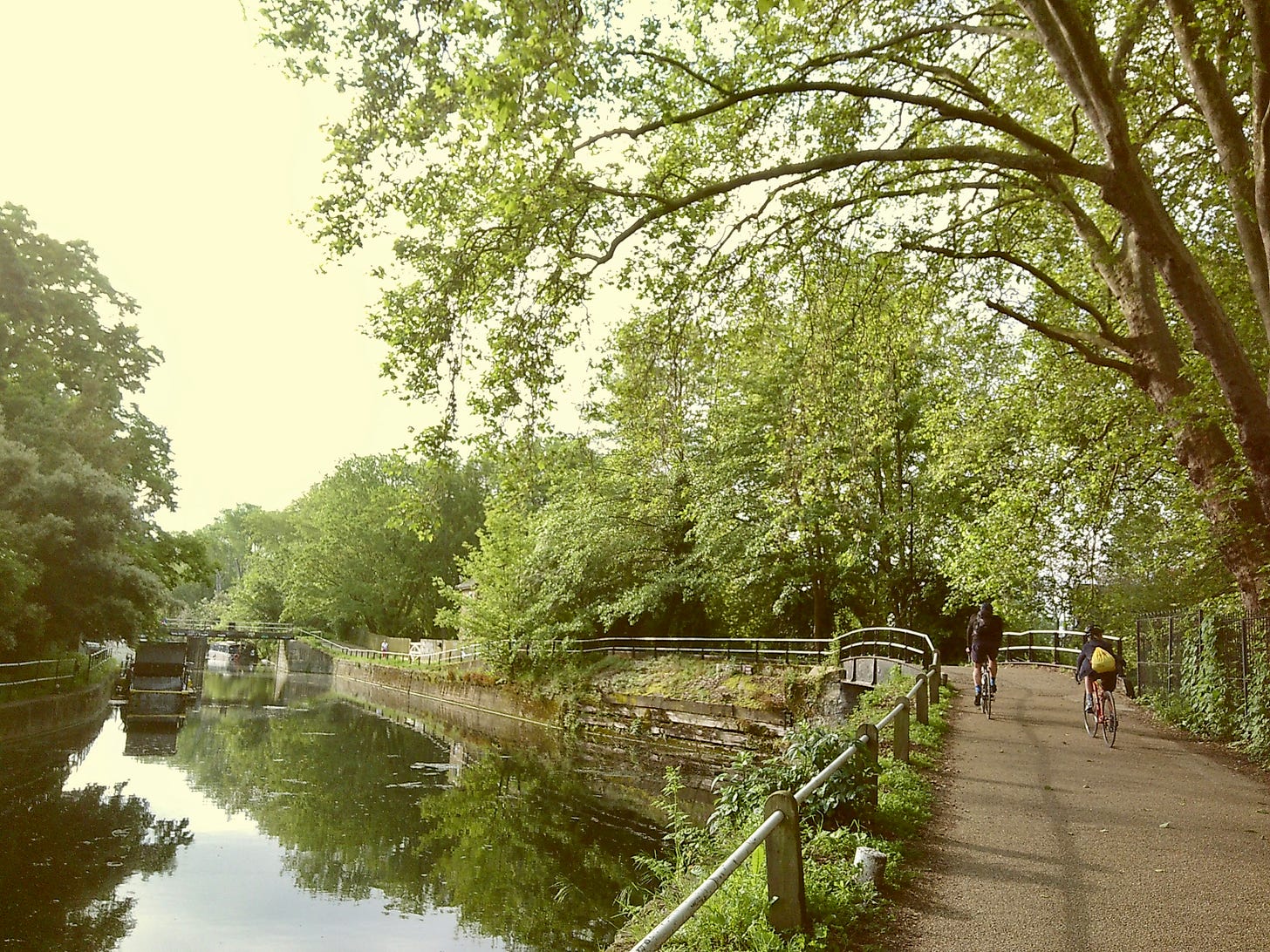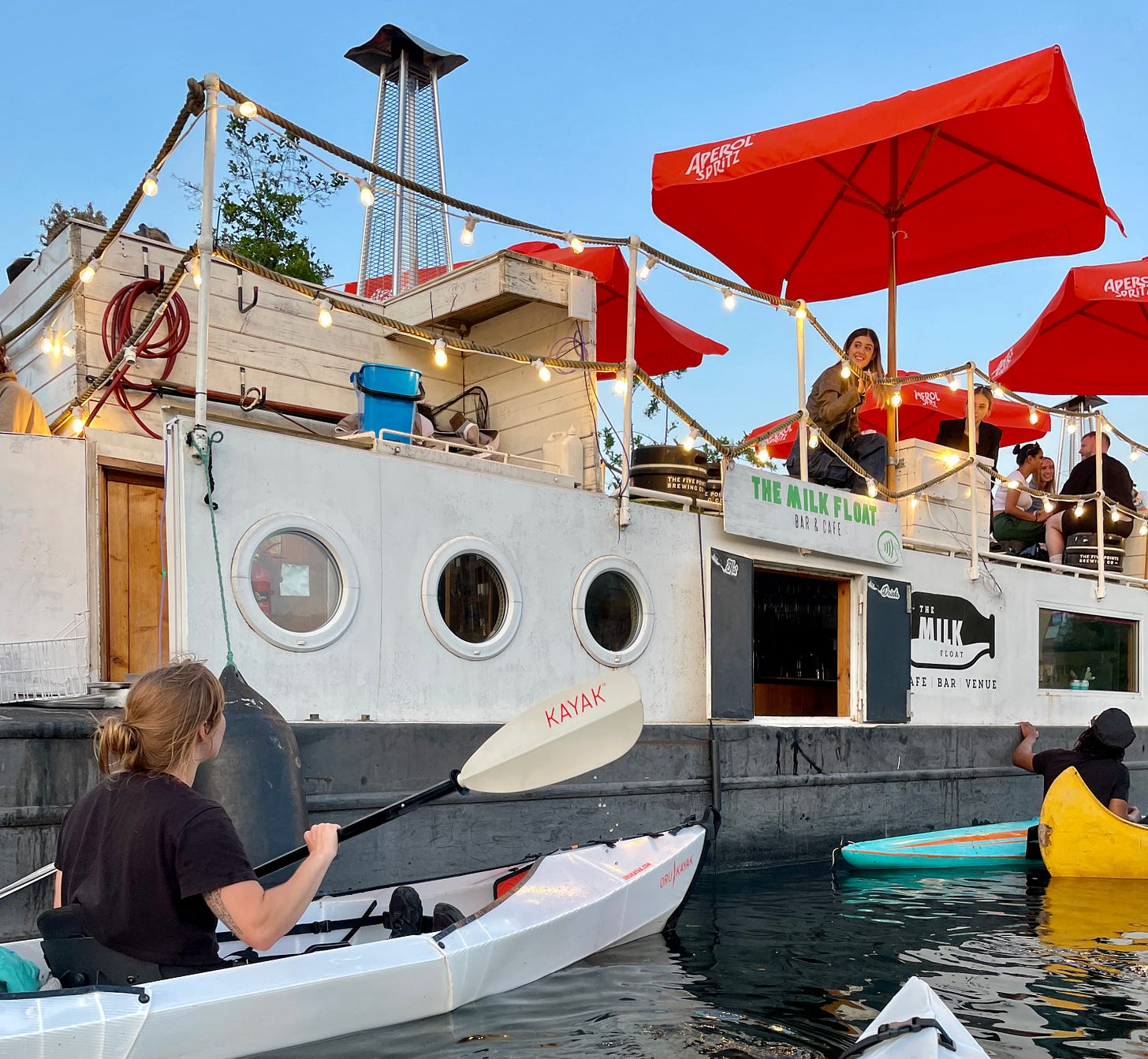London's wildest places
Everyone's got London all wrong. It's not a city, it's an urban forest. These are my favorite places to find nature in the world’s capital.
On a random day last spring, I woke up at a time of morning that many people call “late-night.” Usually, I would take such an opportunity to scroll Instagram until I start questioning my life choices, but this time, I looked at the clock and thought, I can do something with this. Instead of opening my phone, I went down to the basement and hauled out my folding Oru kayak, which fits in a backpack.
I left the house while it was still dark and made it to the Lea River Navigation just as the clouds started turning pink. In the daytime, the towpaths here are busy with runners, walkers, dogs, and bicycles. It’s always quiet on the water.
For nearly three hours, I was alone with the birds as I paddled as far north as you can go without portaging over a lock. I spotted dozens of fuzzy young swans, goslings, and ducklings swimming under close parental supervision. Then I watched a swan try to pick a fight with a flock of geese, which is probably the London equivalent of having a standoff with a bear. (Have I gone soft? I also now think cows are scary.) Instead of looking at my phone, I took photos with a digital ‘disposable’ camera, which doesn’t have a screen so it feels like shooting analog.
The line between city life and nature is blurry here. Unlike the manicured gardens of Hyde and St. James’s Parks, Hackney has a lot more natural shades of green. Here, in the marshes and wetlands, you can spot herons perched on branches. On the canal towpaths, foxes dart around bicycles and outdoor living rooms as they head home with their prey. I see them on my street or in my garden almost every day.
Whacky city shenanigans look different here, too. When I first moved to the neighborhood, I went for a walk in Hackney Marshes and stumbled upon pirate clowns doing a show on a circus ship.
I wouldn’t say it was the best performance I’ve ever seen, but it was certainly the wildest place I have ever seen buskers. A crowd assembled in front of the tall grasses to watch an aerial gymnast do tricks above a pile of broken glass.
“What is this place?” I kept thinking.
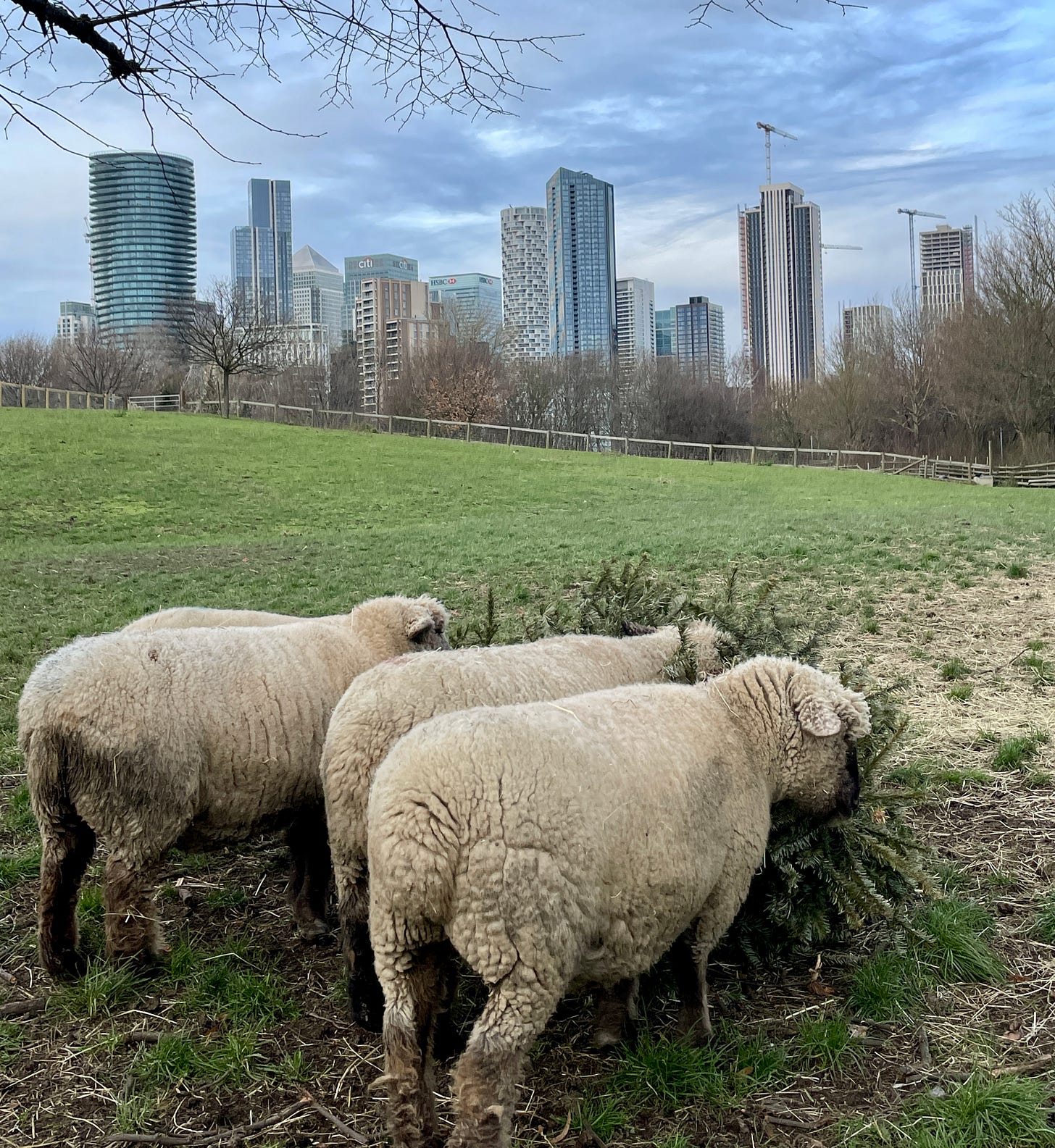
People often laugh when I tell them I love this city because of its nature.
“I’ve literally never heard anyone say that before,” one long-time resident told me recently.
People usually love the nightlife, or the culture, or the plays. Postcards of London usually feature Big Ben, Tower Bridge, double-decker buses, and one or more iconic red telephone booths. That’s the stuff people want to check off their list when they come here. But my London is the London of canal boats, wetlands, marshes, and thickets where blackberries grow in such quantities that there are always more to pick.
I love the summertime wildflower meadow at London Fields, the baby goats at Hackney City Farm, and the mind-boggling views from Mudchute Farm at the southern edge of the Canary Wharf financial district, where sheep graze in view of the banks. I love the Hampstead Heath Ladies Pond, where women queue for hours on hot summer days and earn respect by wild swimming in January. I love watching mudlarkers scout for ancient pottery sherds on the mucky banks of the Thames, and taking my folding boat on the Tube to paddle through Regent’s Park.
London can be a harsh, unforgiving city, just like any other. But it is so green, it does technically count as a forest. There are thousands of parks and green spaces within its boundaries, and when it’s sunny, it can feel like utopia. In spring, when the trees around my house bloom with purple, white, and pink blossoms, it feels urgent to sit and stare at the view of my garden. I miss it when I travel. This year, I’m planning trips around that bloom.
I’ve taken friends out on the canals with the kayaks at least a dozen times, and it never ceases to feel special. When I want to spend a morning watching the birds, I paddle north toward Walthamstow Wetlands. When I want to show out-of-town friends something novel, I take them south to Hackney Wick, where we can order milkshakes and hot dogs from a boat cafe called the Milk Float.
Sure, I love the big city things, too—going to museums and plays, feeling like I can be a tourist without even getting on a train, and hearing forty different accents in the span of a day. But it’s the nature that keeps me here.
The sounds of wild London
Sometimes I record mini podKassts for my friends when I’m traveling, kind of like an audio painting of where I am. It started as a joke series called “All Cows Considered,” when I hiked the Cotswold Way a few summers ago. Now, we consider many things.
On one sunrise mission last year, I recorded a dispatch from the canal as I drifted along in my kayak. I wanted to share a moment of peace: birdsong, in the city, louder than almost everything else around. Here’s a little snippet of zen. I recommend earbuds so you can really hear the birds.
Five ‘wild’ itineraries for your next trip to London
I’ve been on a mission to find all the best parks in the city, and I still have much to explore. I have some favorites, though, and you’re unlikely to see them at the top of most classic “what to do in London” lists.
Here’s where I go to escape to the forest, go for a ‘wild’ swim, enjoy a riverside pint, and read books in quiet gardens hidden in the busy city center. Scroll all the way down for a Google Map with pins of all my hideaways, which you can save to your phone for your next trip here.
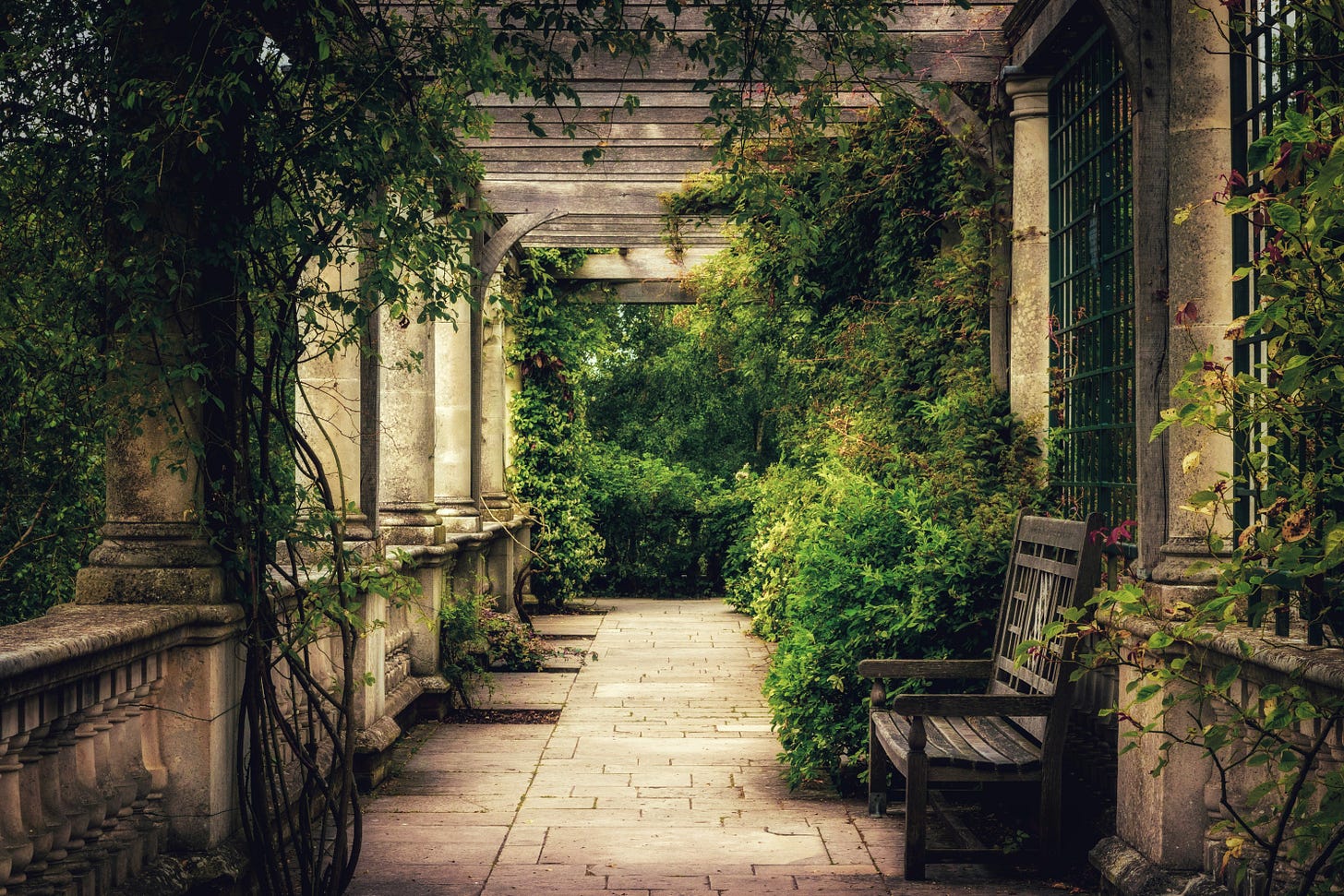
For a magical day in the forest: the Hampstead Heath swimming ponds — Hampstead Heath is a huge green space with grassy, rolling hills ideal for picnicking, and dense forests where you can feel miles away from city bustle. It has three swimming ponds; four if you count the one for dogs. I’ve never been to the men’s or mixed ponds, but the Ladies’ Pond can only be described as true magic. It’s a true safe space for women to relax out of public view. There are two topless sunbathing areas: one which is free and one which is accessible only to people who’ve paid for a swim. Both are fantastic, and full of scenes of joy, love, and wildlife. I once watched a group of ladies throw a tablecloth over a suitcase to celebrate a friend’s birthday. Another time, I watched a fox steal a sandwich out of someone’s backpack.
Somehow, the Ladies Pond is in a cell service dead zone, which adds to the enchantment. It’s “urban nature” in every sense, and it is probably the single best place in the city. In winter months, you can show up for a swim without issue, but in the summer you need to book ahead if you want a guaranteed spot. Otherwise, you can show up for open swim hours, but beware that space is capped and you’ll be turned away if the queue gets too long. (The queue itself is an adventure in Britishness.)
Guys, if you don’t want to feel left out, don’t worry: once a year, the Ladies’ Pond welcomes men for a breakfast social. The Men’s Pond reciprocates on a different day. You can find booking details, when applicable, for all ponds here.
Bonus: Walk to the Hill Garden and Pergola, a lesser-known part of the park. Wisteria hangs over the stone walkways in summertime, and you’ll also find a well-manicured rose garden. Ideal for a romantic picnic and a real “wow” moment if you’re trying to surprise someone.For foraging blackberries, birdwatching, and paddlesports: the Lea River Navigation, Hackney Marshes, and Walthamstow Wetlands
It’s still unclear to me whether I’m supposed to refer to this place as a “river” or a “canal,” but either way it’s the most underrated green/blue space in the city. You can’t swim here, but you can paddle kayaks, rowboats, or canoes up and down the waterway, or you can walk or run on the towpaths.
I usually start around The Princess of Wales Pub, and go either north toward Walthamstow Wetlands or south to Hackney Wick. North, you’ll find a quiet, tree-lined corridor where you can spot herons and other waterfowl. You won’t be able to get out of your boat to explore the Wetlands (unless you find some secret I’m not aware of), so I also recommend going there on foot if you enjoy birdwatching. The Wetlands reserve has a great cafe with a watchtower, lots of walking paths, and hides for birdwatching. It’s still amazing to me that this place is inside London’s borders.
If you head south on the canal, you’ll find a more urban, industrial, and hip vibe, with venues like the Milk Float and Crate Brewing right on the water. If you don’t have a boat of your own, you can rent one there from Moo Canoes.
Finally, just east of the canal, you’ll find Hackney Marshes. This is a massive green space, to the east of the Lea River. Here, you’ll find cricket pitches, weekly Parkruns (they’re free and a great way to meet people while getting in 5K), quiet creekside paths for a bit of meditation, and endless blackberry bushes in summertime. Occasionally, you’ll even find a herd of cows grazing northeast of Lea Bridge Road.
In the marshes and wetlands, you may spot wildlife you’re not expecting. For help identifying birds and other flora and fauna, the London Wildlife Trust is a great resource.For picnicking in a more urban green space: London Fields and Broadway Market
If you want the more urban side of nature, few things are better than London Fields on a sunny summer day. On weekdays, you can find lunch and creative coffee drinks at Netil Market just southeast of the park (I love the rose chai at Paradox), and on weekends Broadway Market is full of food, vintage, and art vendors. Bring a picnic blanket and start at the south end of the market so you don’t miss anything. Once you get all the way to the end, London Fields is just across the street. In late spring/early summer, a wildflower meadow blooms on the south end of the park.
If you want to make this a longer walk, go on a Sunday and start at the Columbia Road Flower Market (just beware it is *super* touristy and *very* crowded. As you make your way north to London Fields, pay a visit to the Hackney City Farm, where you can see goats, pigs, chickens, and sheep, and buy fresh eggs. After you make it through Broadway Market, head to London Fields Lido if you want to go for an outdoor swim. It’s open and heated year-round. Grab a cupcake at Violet Cakes, just a little further north, for an extra-special treat (chocolate with violet frosting is the best flavor—no competition).For historic greenhouses and ever-changing exhibits: Kew Gardens
Kew is no secret—it has literally been around since the 1800s. But this place is deceptively large, and it’s worth taking a day to visit the westernmost part of London. The Palm House is my favorite, where you can climb a spiral staircase to a narrow walkway above the greenery for truly magical views. Make a day trip out of it by taking some time to explore other green spaces around Richmond. In town, you’ll spot rowers pacing up and down the Thames. At the top of the Terrace Gardens, you’ll find a stunning view of the bends in the river. You might spot deer at the enormous Richmond Park, a former royal hunting ground. And for a bougie treat, make an afternoon stop at Petersham Nurseries for tea and cake. Book ahead when possible—it gets busy here quickly.For a secret garden: St. Dunstan in the East Church Garden
Many neighborhoods in London were decimated during WWII, which is why you’ll find such eclectic architectural styles across the city. In some places, everything is super old until, boom, you walk right into a glass monstrosity, and in others the opposite is true.
At St. Dunstan’s, the city has given new life to the bones of a church that was damaged during the Blitz, by creating a garden within its open-air shell. I won’t lie to you—the secret is out about this one. You’re almost certain to find influencers here, or professional photographers using the ivy-covered walls as a backdrop, but don’t let that deter you. You’ll also find locals having a peaceful lunch break here, and friends enjoying a chat over coffee. It’s such a unique place, and I’ve spent many hours here reading books or just sitting to enjoy the space. It may not be secret, but it is hidden, tucked away down a side street in London’s historic financial district. It is a truly special place.
An old film photo I took at St. Dunstan in fall 2020. This is one of the places that made me fall in love with London when I first came here. If you want to hit a few stops in one go, pair this with a trip to the Sky Garden, which is a few minutes’ walk away. It’s sort of the opposite of St. Dunstan’s: a garden at the very top of a skyscraper called the Walkie Talkie. This is also a popular spot, but the views of the city are absolutely worth it, especially at sunset. It’s free to visit but you must have a reservation. If free tickets are sold out, you may have luck reserving a table for drinks in the bar or dinner in the restaurant (be prepared to spend more than you may at street level).
Bonus garden: Christ Church Greyfriars has a very similar backstory to St. Dunstan’s; it’s a very old church that was damaged in WWII. It’s more exposed to the city and not quite as tucked away as St. Dunstan’s, but that’s actually to your benefit—it’s not on nearly as many “secret London” lists, so the gardens here are hidden in plain sight. I’ve spent many hours reading and writing here and have never had to compete for a bench.
Ready to plan your trip? I made you a map with pins for every single one of these places. If you have questions or want more recommendations, feel free to drop them in the comments, and I’ll share more thoughts.
Enjoy!

